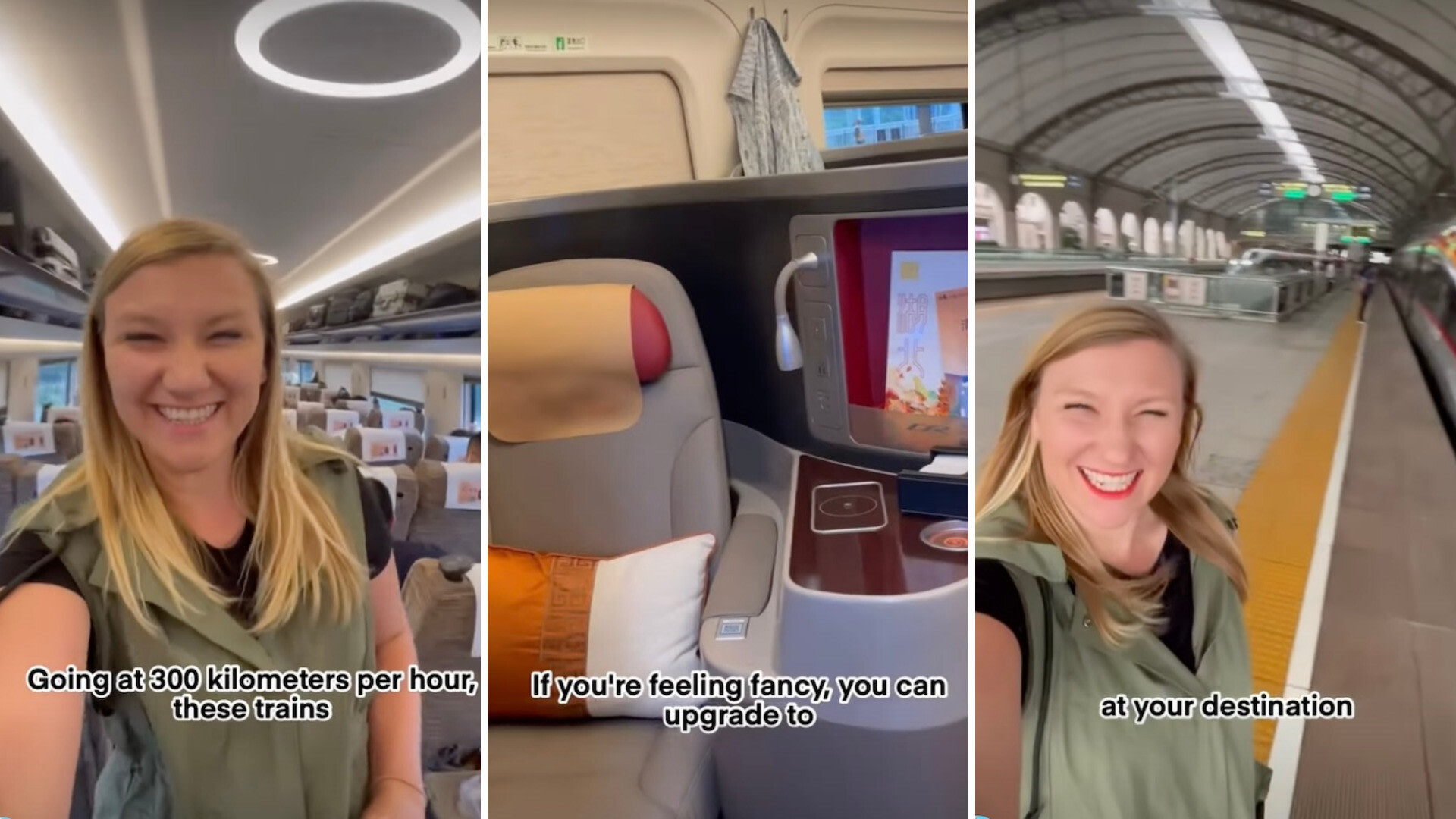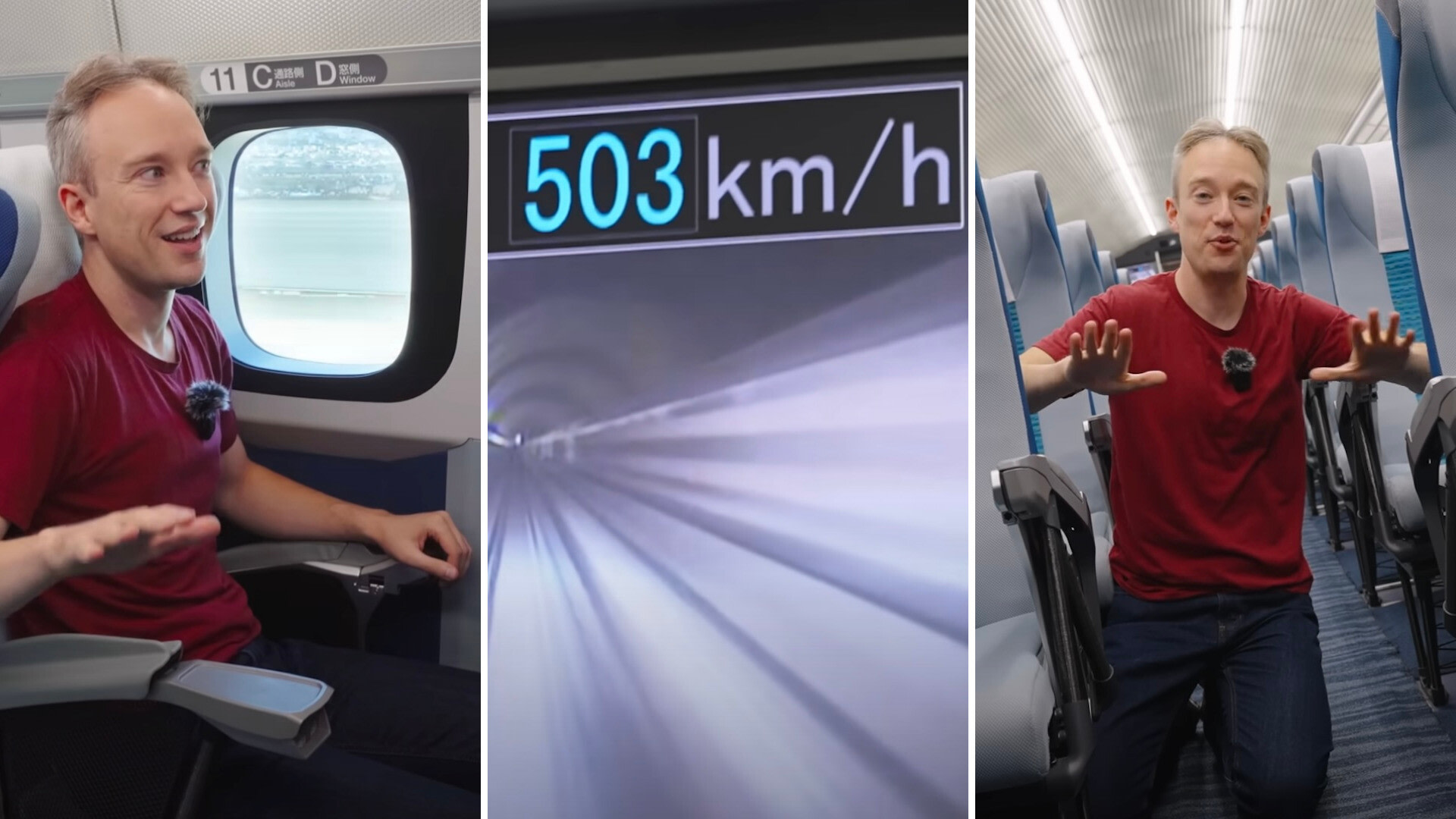Rail systems have been around for centuries, but the relatively new invention of high-speed rail is taking the world by storm. It offers an electrically powered sustainable mode of transportation that reduces pollution up to 90%, according to Project Drawdown, and trains are only getting faster, more luxurious, and more convenient.
With current train speeds ranging from 160 miles per hour to 310 miles per hour and advancing technology opening the door for trains to travel up to 621 miles per hour, high-speed rail has the potential to change how we travel around the world.
Acela (U.S.)

The Acela train, operated by Amtrak, is the fastest train in North America with a top speed over 150 mph. New models set to debut by the end of 2024 will reach 160 mph.
Current Acela trains travel from Boston to Washington, D.C., with stops in several cities. Over the next 15 years, Amtrak hopes to further develop the rail system in the U.S. by adding 39 new routes in more than 25 states.
Brightline West (U.S.)

Brightline is the only private intercity passenger railroad in the U.S., and its current rail system connects Central and South Florida with stops between Miami and Orlando. Brightline's proposed new expansion, Brightline West, will connect Las Vegas to Southern California.
After breaking ground in April, Brightline hopes to get the Brightline West line running by the 2028 Olympics, which Los Angeles will host. The trains will not only reach speeds up to 200 miles per hour but also offer more luxurious cabin options for its passengers than current rail systems in the U.S.
Whoosh (Indonesia)

Indonesia's Whoosh train connects the 100 miles between Jakarta and Bandung. Its name stands for "Waktu Hemat, Operasi Optimal, Sistem Handal" in Indonesian, which translates to "time-saving, optimal operation, reliable system."
Reaching speeds of 220 mph, the train cuts the travel time between the two cities from three hours down to just 40 minutes. Despite being a revolutionary mode of transportation — the first of its kind in both Indonesia and Southeast Asia overall — some locals worry that high ticket prices may limit its viability against a regular train or shuttle.
China State Railway Group (China)

China has made some of the biggest advancements in high-speed rail, expanding its rail network from almost nothing to 2,000 miles of track regularly carrying trains at high speed. The U.S. does not even come close, with only 34 miles of the Acela train route reaching the top speed of 150 mph.
Recently, one traveler shared their experience aboard a high-speed rail in China, traveling at speeds up to 186 mph.
Maglev (Japan)

This maglev train in Japan, planned to open in 2027, will be the fastest in the world. Currently in testing near Tokyo, the train is guided through a tunnel. Upon reaching 93 mph, it levitates using superconducting magnets along the walls and within the track.
Because it moves by magnetic force instead of friction, it accelerates and decelerates much faster than normal trains and can travel at a speed of up to 310 mph.
Join our free newsletter for weekly updates on the coolest innovations improving our lives and saving our planet.









